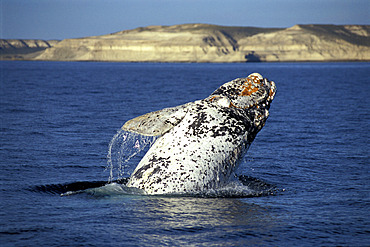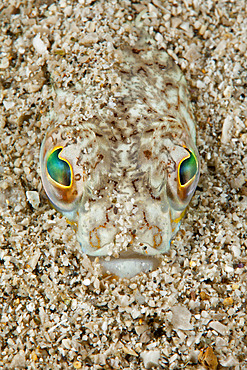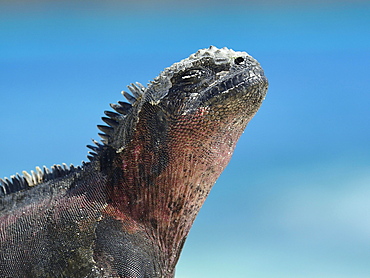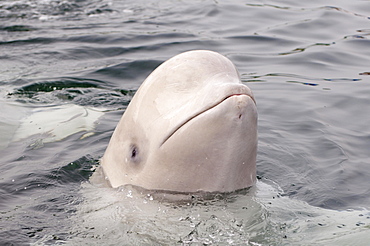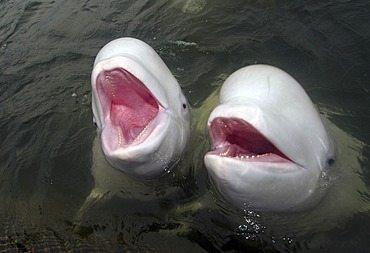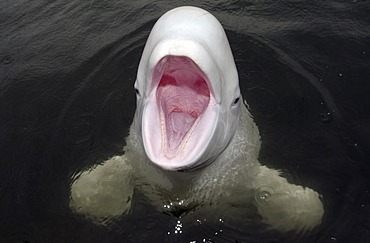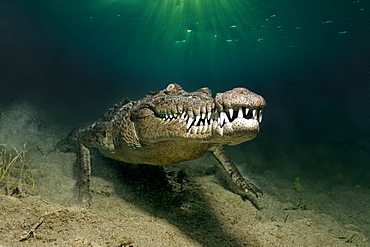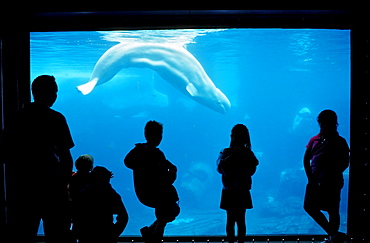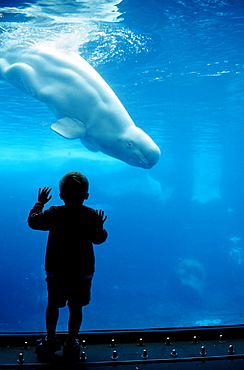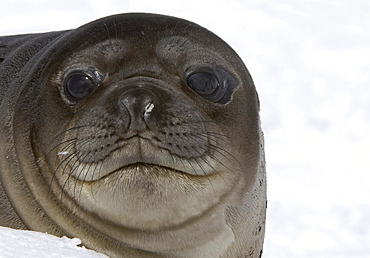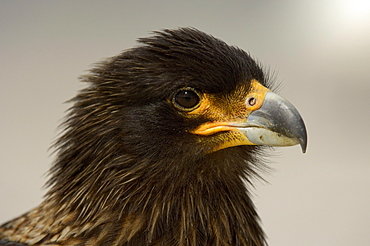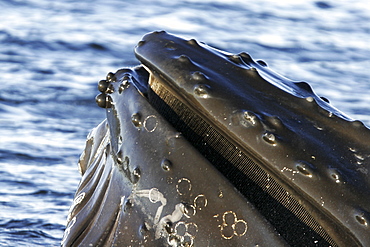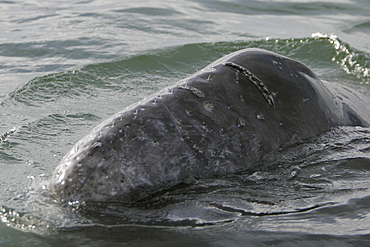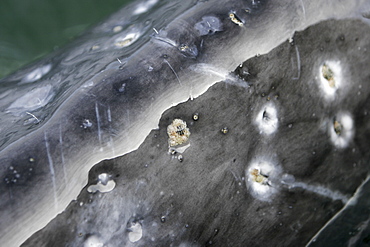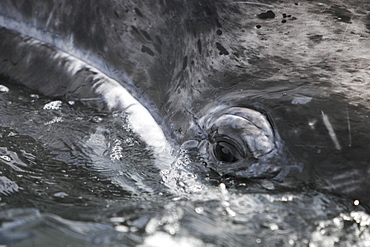Recent searches
Loading...
1350-6190 - Leaping Southern Right Whale, (Eubalaena australis), Golfo Nuevo, Chubut, Patagonia, Argentina
1116-51884 - Close-up of a blue goatfish (Parupeneus cyclostomus) showing the two barbels tucked under the chin, used to probe and detect prey; Maui, Hawaii, United States of America
860-290096 - Greater weever, Trachinus draco, Marine Protected area Punta Campanella, Massa Lubrense, Penisola Sorrentina, Costa Amalfitana, Italy, Tyrrhenian Sea, Mediterranean
832-390004 - Marine iguana (Amblyrhynchus cristatus), Iguana, portrait, Garnder Bay, Espanola Island, Galapagos, Ecuador, South America
832-381616 - Beluga Whale or White Whale (Delphinapterus leucas), Sea of Japan, Primorsky Krai, Russia, Europe
1116-39723 - Yellow pygmy seahorse (Hippocampus bargibanti), also known as Bargibant's Pygmy Seahorse, camouflaged in coral. They are found from Southern tropical Japan, throughout the Philippines, Indonesia, east to Palau, Papua New Guinea, Solomon Islands, Fiji, Van
1116-39946 - An extreme close-up of a Shortpouch Pygmy Pipehorse (Acentronura tentaculata), which is also know as a Hairy Pygmy Pipehorse, Dumaguete, Philippines
1116-39721 - Yellow pygmy seahorse (Hippocampus bargibanti), also known as Bargibant's Pygmy Seahorse. They are found from Southern tropical Japan, throughout the Philippines, Indonesia, east to Palau, Papua New Guinea, Solomon Islands, Fiji, Vanuatu and the Great Bar
832-375036 - Giant Pacific octopus or North Pacific Giant octopus (Enteroctopus dofleini), Japan Sea, Far East, Primorsky Krai, Russian Federation
832-367923 - Steller sea lion (Eumetopias jubatus), bull, swimming, California, USA
832-367922 - Steller sea lion (Eumetopias jubatus), bull, swimming, California, USA
832-375047 - Two Beluga whales (Delphinapterus leucas), Japan Sea, Primorsky Krai, Russian Federation, Far East
832-375046 - Beluga whale (Delphinapterus leucas), Japan Sea, Primorsky Krai, Russian Federation, Far East
832-375054 - Giant Pacific octopus or North Pacific giant octopus (Enteroctopus dofleini), Japan Sea, Primorsky Krai, Russian Federation
832-367262 - Beluga, White whale (Delphinapterus leucas), White Sea, Karelia, north Russia, Arctic
832-372275 - American crocodile (Crocodylus acutus), underwater, head-on, underwater on sandy bottom, Head, mouth, set of teeth, Republic of Cuba, Caribbean Sea, Central America
832-369847 - California sea lion (Zalophus californianus), female catching herring
869-1459 - lemon shark shark swimming under water over sandy ground underside of head visible mouth open showing teeth horizontal format underwater shot lemon sharks Bahamas Central America America Atlantic Ocean Bahamas Central America America Atlantic Ocean
1113-84093 - Beluga whale in seen through window, Delphinapterus leucas, USA, California, San Diego, SeaWorld
1113-84097 - Spectators viewing bottle-nosed dolphins, Tursiops truncatus, USA, California, San Diego, SeaWorld
1113-84095 - Bottlenose dolphin, Tursiops truncatus, USA, California, San Diego, SeaWorld
1113-84094 - Child looking at Beluga whale, Delphinapterus leucas, USA, California, San Diego, SeaWorld
1112-167 - Lava lizard (Microlophus spp,) on top of marine iguana (Amblyrhynchus cristatus), Las Bachas, Santa Cruz Island, Galapagos Islands, Ecuador, South America
1112-166 - Lava lizard (Microlophus spp,) on top of marine iguana (Amblyrhynchus cristatus), Las Bachas, Santa Cruz Island, Galapagos Islands, Ecuador, South America
1198-510 - Nile tiger fish. Hydrocynus forskalii. Close-up of head. Okavango river, botswana
1198-146 - Seal (mirounga leonina) pup, close-up of face, south georgia.
1198-458 - Jackass penguin (spheniscus demersus) portrait, native of southern africa (captive bristol zoo).
1198-692 - Macaroni penguin (eudyptes chrysolophus) hercules bay, south georgia, close-up showing crest feathers.
1198-468 - Rockhopper penguin (eudyptes chrysocome) new island, falkland islands, portrait.
1198-339 - Rockhopper penguin (eudyptes chrysocome) new island, falkland islands, portrait.
1198-6 - Macaroni penguin (eudyptes chrysolophus) cooper bay, south georgia, close-up of head, portrait.
1198-269 - King penguin (aptenodytes patagonicus) right whale bay, south georgia, close-up of head and neck
1198-301 - Gentoo penguin (pygoscelis papua) ocean harbour, south georgia, portrait, in snow.
1198-264 - Gentoo penguin (pygoscelis papua) ocean harbour, south georgia, calling, head pointed skywards.
1198-194 - King penguin (aptenodytes patagonicus) south georgia, preening, close-up.
1198-200 - Rockhopper penguin (eudyptes chrysocome) bleaker island, falkland islands, close-up of head.
1198-750 - Striated caracara (phalcoboenus australis) new island, falkland islands, portrait.
1060-23 - King Penguins on the beach head to head, South Georgia
1022-83 - western king wrasse (coris auricularis), male, dark pink colour with reddish-brown band running around boby and blue-green colouration over the head, wild, day, marine protected area, diving off Rottnest Island, reef edges, sand, seagrass, Western Australia, Indian Ocean. MORE INFO: social structure where dominant male, usually the biggest in the area, will have a harem of females. When the male dies or is absent for any length of time the largest female will change sex and dominate the group.
978-339 - Manta birostris, head and eye closeup. Ecuador
1012-95 - Soft Coral & diver. Sipadan has some of the best dropoffs in the world. Subsequently, here grows some of the prettiest corals (hard & soft) in the Pacific. Sipadan, Malaysia
1012-3 - Melon-headed whale (Peponocephala electra). Surfacing, lifting its head high out of the water.
Indonsia.
1012-4 - Melon-headed whale (Peponocephala electra). Surfacing, lifting its head high out of the water.
Indonsia.
931-308 - Sperm whale (physeter macrocephalus) A sperm whale head and wave. The Gulf of California.
1067-44 - White-eyed moray eel, Siderea thyrsoidea. Often pokes its head out of holes and crevices on coral reefs in the Indo-Pacific region. Lembeh Strait, North Sulawesi, Indonesia, Pacific Ocean.
931-276 - Gray whale (eschrichtius robustus) A graywhale approaches a boat, the eye clealry visible. Pacific Ocean
917-241 - Leucistic Antarctic Fur Seal pup, Arctocephalus gazella, South Georgia, South Atlantic Ocean. Leucism is a general term for the phenotype resulting from defects in pigment cell differentiation and/or migration from the neural crest to skin, hair or feathers . This results in either the entire body surface or patches of the body surface having a lack of cells capable of making pigment.
915-267 - Pollack eye, Pembrokeshire, Wales, Animal Abstract
931-312 - Blue whale (balaenoptera musculus) A submerging blue whale head.The Gulf of California.
931-300 - Common dolphin (delphinus delphis) The head of a common dolphin.Gulf of California.
931-369 - Common dolphin (delphinus delphis) The head of an approaching dolphin. Gulf of California.
931-277 - Gray whale (eschrictius robustus) A gray whale sticks the top of its head out of the water beside a boat. Pacific Mexico.
931-305 - Gray whale (eschrichtius robustus) A gray whale head is clasped by whale watchers. Mexico.
931-59 - Killer whale (Orcinus orca) head surfacing at speed. Gulf of California. (A4 only).
931-437 - Spotted dolphins (stenella frontalis) Close up of a spotted dolphin head and eye. Canary Islands.
931-307 - Sperm whale (physeter macrocephalus) A sperm whale head pushing up a wave. The Gulf of California.
931-444 - Short finned pilot whale (globicephala macrocephalus) A pilot whale head and eye in a calm sea. Canary Islands
931-313 - Blue whale (balaenoptera musculus) A blue whale head on showing the mouth under the water.The Gulf of California.
931-342 - Humpback whale (megaptera novaeangliae) The head of a surfacing humpback whale. South Pacific
931-332 - Fin whale (balaenoptera physalus) The head of a fin whale and barnacles attached.Gulf of California.
931-310 - Sperm whale (physeter macrocephalus) A sperm whale dives alongside its companion who has an odd scar at the fron right side of its head.. The Gulf of California.
917-183 - Male Humpback Whale, Megaptera novaeangliae, the tubercles on its head are bloodied from fighting with other males whilst in pursuit of a female, Costa Rica, Pacific Ocean.
915-212 - Bass (Dicentrarchus labrax) Pembrokeshire, Wales, Animal Abstract
915-211 - Bass (Dicentrarchus labrax) Pembrokeshire, Wales, Animal Abstract (rr)
915-282 - Ballan Wrasse, Labrus bergylta, Pembrokeshire, Wales, Animal Abstract
921-873 - 2 Orca (Orcinus orca), Killer whale, head above water. Cape Dyer, Baffin Island, Canada, North America
915-210 - Bass (Dicentrarchus labrax) Pembrokeshire, Wales, Animal Abstract
915-213 - Bass (Dicentrarchus labrax) Pembrokeshire, Wales, Animal Abstract
917-240 - Leucistic Antarctic Fur Seal pup, Arctocephalus gazella, amongst normally coloured animals, South Georgia, South Atlantic Ocean. Leucism is a general term for the phenotype resulting from defects in pigment cell differentiation and/or migration from the neural crest to skin, hair or feathers . This results in either the entire surface or patches of the body surface having a lack of cells capable of making pigment.
915-268 - Pollack eye, Pembrokeshire, Wales, Animal Abstract
979-7139 - Chinstrap penguin (Pygoscelis antarctica) chick head detail at colony on Useful Island near the Antarctic Peninsula. There are an estimated 2 million breeding pairs of chinstrap penguins in the Antarctic peninsula region alone, perhaps as many as 7.5 million breeding pairs in all of Antarctica. Their name derives from the narrow black band under their heads which makes it appear as if they are wearing black helmets, making them one of the most easily identified types of penguin. Other names for them are "Ringed Penguins", "Bearded Penguins", and "Stonecracker Penguins" due to their harsh call. They grow to 68 cm (27 in). The average adult weight of a Chinstrap Penguin is 4.5 kg (10 lbs). Weight can range from 3 to 6 kg (6.6-13.2 lbs), with males being slightly larger and weight varying based on where the penguin is in the breeding cycle. Their diet consists of krill, shrimp, and fish. On land they build circular nests from stones, and lay two eggs, which are incubated by both the male and the female for shifts of five to ten days. They can also breed on icebergs, though they prefer non-icy conditions. The chicks hatch after about 35 days, and have fluffy gray backs and white fronts. The chicks stay in the nest for 20?30 days before they go to join a creche. At around 50?60 days old, they moult, gaining their adult plumage and go to sea. The Chinstrap Penguin was first described by German naturalist Forster in 1781. Its specific epithet was often seen as antarctica, however a 2002 review determined the genus Pygoscelis was masculine, and hence the correct binomial name is Pygoscelis antarcticus.
979-5109 - Green sea turtle (Chelonia mydas) at cleaning station at Olowalu Reef, Maui, Hawaii, USA
979-431 - California gray whale (Eschrichtius robustus) calf surfacing in the calm waters of Magdalena Bay, Baja California Sur, Mexico.
979-430 - California gray whale (Eschrichtius robustus) calf surfacing in the calm waters of Magdalena Bay, Baja California Sur, Mexico.
979-9000 - Adult humpback whale (Megaptera novaeangliae) head-lunging in the fjord of Isfjardardjup, Iceland
979-9455 - The endemic Galapagos marine iguana (Amblyrhynchus cristatus) with a lava lizard on top of its head in the Galapagos Island Archipelago, Ecuador
979-4468 - The Leopard seal (Hydrurga leptonyx) is the second largest species of seal in the Antarctic
979-4161 - Antarctic Fur Seal (Arctocephalus gazella) pup on the island of South Georgia, southern Atlantic Ocean
979-5423 - The endemic Galapagos marine iguana (Amblyrhynchus cristatus) in the Galapagos Island Archipelago, Ecuador
979-4591 - Weddell Seal (Leptonychotes weddellii) hauled out on ice near the Antarctic Peninsula, southern Ocean
979-591 - Humpback Whales (Megaptera novaeangliae) cooperatively bubble-net feeding in Chatham Strait (upper jaw and baleen detail) in Southeast Alaska, USA. Pacific Ocean.
979-147 - Long-beaked Common Dolphin (Delphinus capensis) surfacing (note the blow behind head) in the Gulf of California (Sea of Cortez), Mexico.
979-6409 - Galapagos sea lion (Zalophus wollebaeki) in the Galapagos Island Group, Ecuador. Pacific Ocean.
979-5410 - The endemic Galapagos marine iguana (Amblyrhynchus cristatus) with Sally lightfoot crab in the Galapagos Island Archipeligo, Ecuador
979-436 - California gray whale (Eschrichtius robustus) calf surfacing in the calm waters of Magdalena Bay, Baja California Sur, Mexico.
979-4182 - Antarctic Fur Seal (Arctocephalus gazella) pup on the island of South Georgia, southern Atlantic Ocean
979-6396 - Adult female California sea lion (Zalophus californianus) at Los Islotes (the islets) just outside of La Paz, Baja California Sur in the Gulf of California (Sea of Cortez), Mexico.
979-4163 - Antarctic Fur Seal (Arctocephalus gazella) pup on the island of South Georgia, southern Atlantic Ocean
979-364 - Young Sperm Whale (Physeter macrocephalus) spy-hopping (note the sloughing skin) in the mid-riff region of the Gulf of California (Sea of Cortez), Mexico.
979-5455 - The endemic Galapagos marine iguana (Amblyrhynchus cristatus) in the Galapagos Island Archipelago, Ecuador
979-432 - California gray whale (Eschrichtius robustus) calf surfacing in the calm waters of Magdalena Bay, Baja California Sur, Mexico
979-4776 - South American Sea Lion (Otaria flavescens) hauled out on small rocky islet just outside Ushuaia, Beagle Channel, Argentina
979-4470 - The Leopard seal (Hydrurga leptonyx) is the second largest species of seal in the Antarctic
979-433 - California gray whale (Eschrichtius robustus) calf surfacing (note eye and mouthline) in the calm waters of Magdalena Bay, Baja California Sur, Mexico.
979-6483 - Galapagos sea lion (Zalophus wollebaeki) in the Galapagos Island Group, Ecuador. Pacific Ocean.
979-1377 - Pacific Green Sea Turtle (Chelonia mydas) resting against coral head off Kapalua, Maui, Hawaii.

